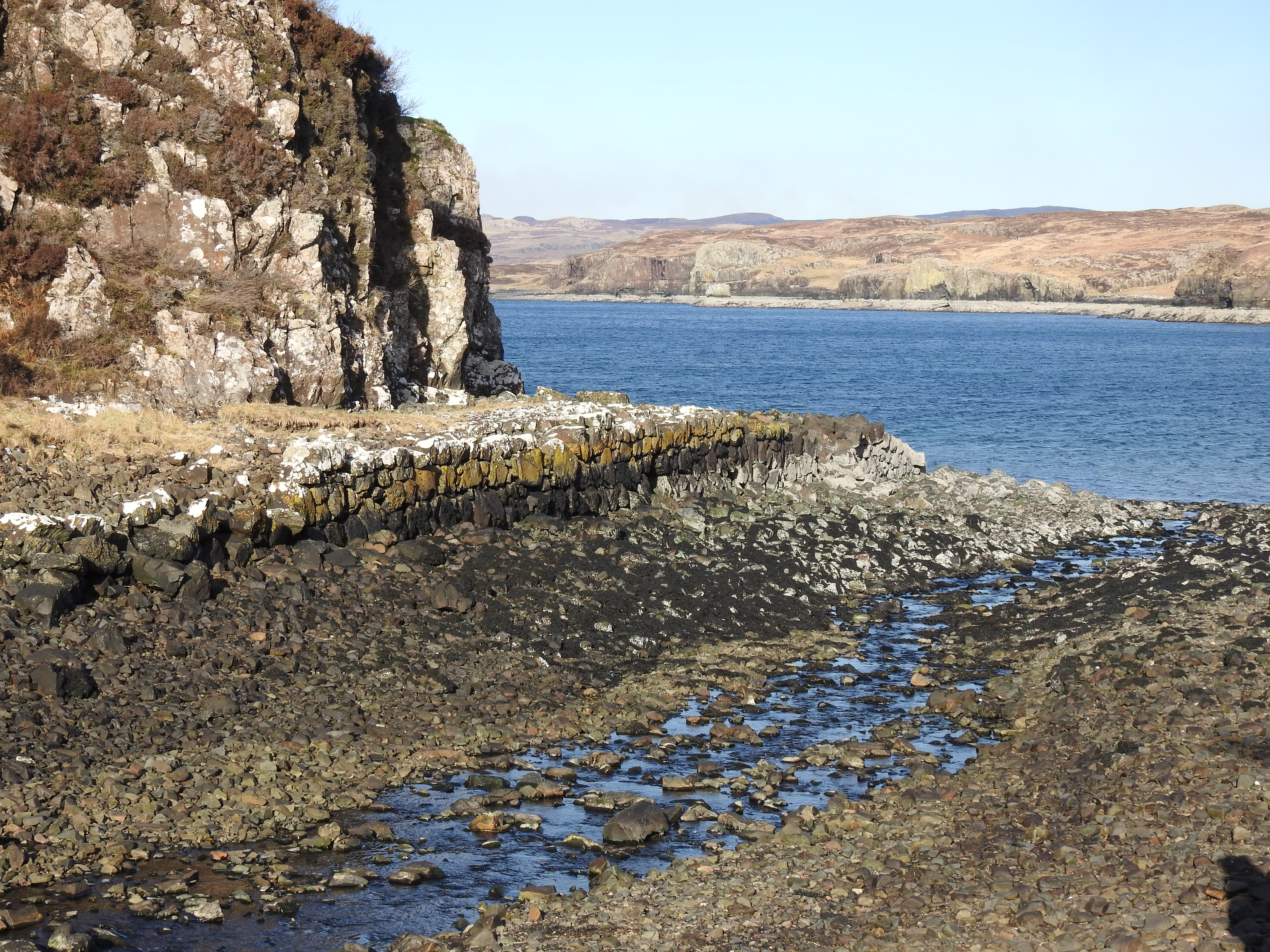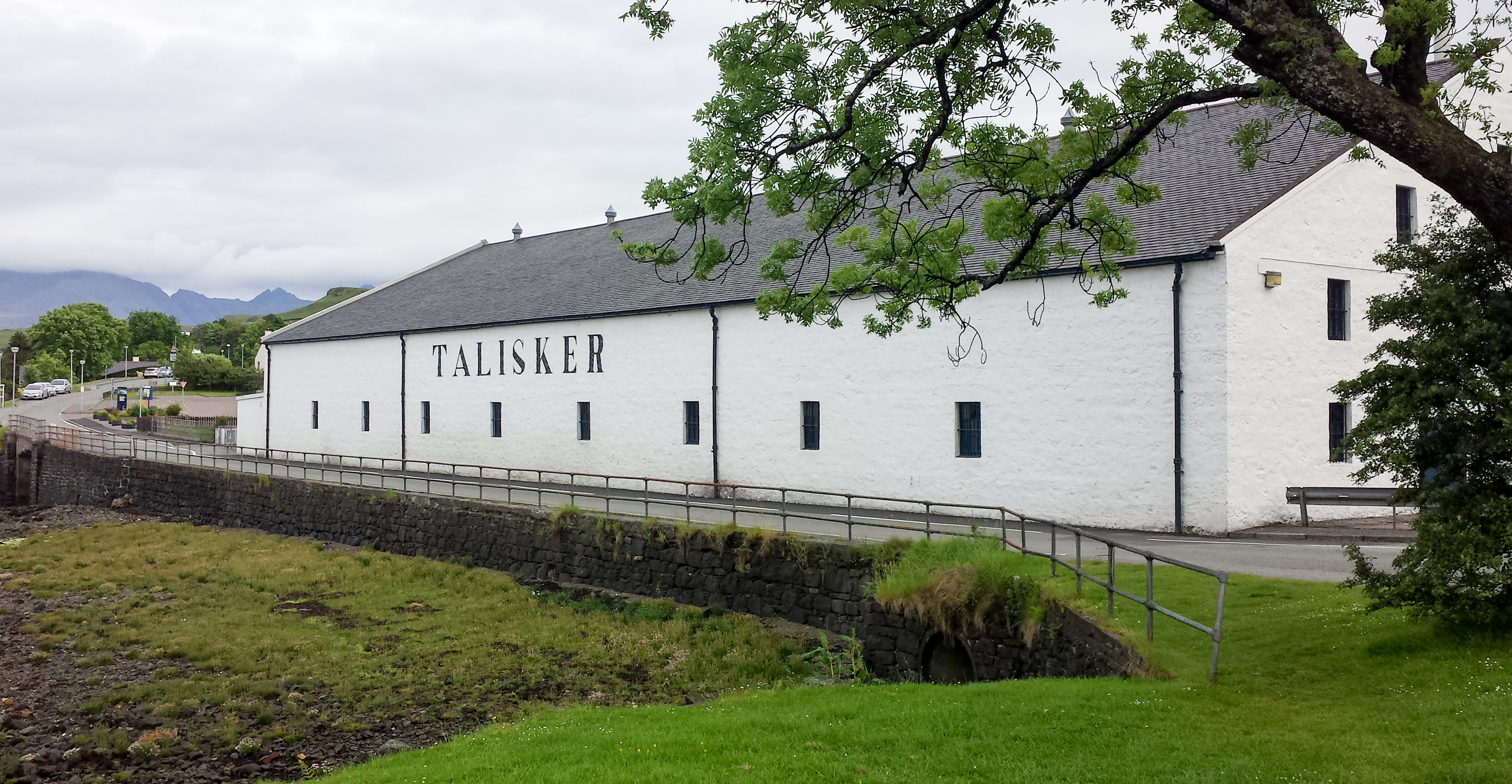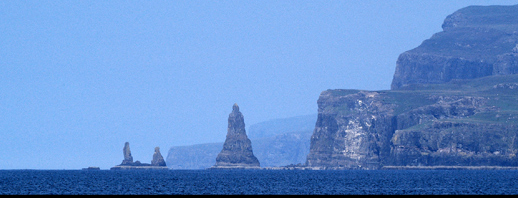|
Fiskavaig Bay
Fiskavaig or Fiscavaig ( gd, Fiosgabhaig) is a picturesque crofting settlement on the north-west shore of the Minginish peninsula, Isle of Skye in the Highland Council area. The township extends westward around the coast some 2.5 miles from Ardtreck in the east, originally however Fiskavaig was a small hamlet centred on the west side of Fiskavaig Bay, (where Fiskavaig Burn enters), at which the remains of several houses can still be seen. These appear to have been inhabited up until the end of the 19th century, and the remains of a small stone pier is still evident. An 1877 Ordnance Survey Map shows several houses in this location and although unclear how many were inhabited at the time the OS Name Book notes that the name Fiskavaig: ".''..is applied to a hamlet of thatched houses occupied by work men in service of the Talisker farmer, the houses are one storey & have a wretched appearance On the property of McLeod of McLeod. The name is Anglicised Fiskr, a fish: vagr, a bay = ... [...More Info...] [...Related Items...] OR: [Wikipedia] [Google] [Baidu] |
Fiskavaig From Fiskavaig Bay
Fiskavaig or Fiscavaig ( gd, Fiosgabhaig) is a picturesque crofting settlement on the north-west shore of the Minginish peninsula, Isle of Skye in the Highland Council area. The township extends westward around the coast some 2.5 miles from Ardtreck in the east, originally however Fiskavaig was a small hamlet centred on the west side of Fiskavaig Bay, (where Fiskavaig Burn enters), at which the remains of several houses can still be seen. These appear to have been inhabited up until the end of the 19th century, and the remains of a small stone pier is still evident. An 1877 Ordnance Survey Map shows several houses in this location and although unclear how many were inhabited at the time the OS Name Book notes that the name Fiskavaig: ".''..is applied to a hamlet of thatched houses occupied by work men in service of the Talisker farmer, the houses are one storey & have a wretched appearance On the property of McLeod of McLeod. The name is Anglicised Fiskr, a fish: vagr, a bay = ... [...More Info...] [...Related Items...] OR: [Wikipedia] [Google] [Baidu] |
Harlosh Island
Harlosh Island is one of four islands to be found in Isle of Skye, Skye's Loch Bracadale. Harlosh Island is from the coast of the Duirinish, Skye, Duirinish Peninsula and from the coast of the Minginish peninsula. At low tide it is only about from Harlosh Point (between Loch Caroy and Loch Vatten) on mainland Skye. The island is around in area, making it roughly the same size as Tarner Island ( to the east). The coastline, which is largely cliff-lined, has a cave on the west coast. The island is long at its longest and wide at its widest. Harlosh Skerry lies just offshore to the north west, upon which seals can be seen frequently. At low tide on the northern coast there is a large sandy bay, however, watercraft should take caution when attempting to land in the bay as several rock formations pose a navigational hazard at low tide. The name "Harlosh" is of Old Norse origin and may refer to a river mouth, although the meaning is not clear. Notes External links ... [...More Info...] [...Related Items...] OR: [Wikipedia] [Google] [Baidu] |
Museum Of Scotland
The National Museum of Scotland in Edinburgh, Scotland, was formed in 2006 with the merger of the new Museum of Scotland, with collections relating to Scottish antiquities, culture and history, and the adjacent Royal Scottish Museum (opened in 1866 as the Edinburgh Museum of Science and Art, renamed in 1904, and for the period between 1985 and the merger named the Royal Museum of Scotland or simply the Royal Museum), with international collections covering science and technology, natural history, and world cultures. The two connected buildings stand beside each other on Chambers Street, by the intersection with the George IV Bridge, in central Edinburgh. The museum is part of National Museums Scotland. Admission is free. The two buildings retain distinctive characters: the Museum of Scotland is housed in a modern building opened in 1998, while the former Royal Museum building was begun in 1861 and partially opened in 1866, with a Victorian Venetian Renaissance facade and a gr ... [...More Info...] [...Related Items...] OR: [Wikipedia] [Google] [Baidu] |
Crescent (Pictish Symbol)
The crescent is a Pictish symbol of unknown meaning, that is generally found in combination with an overlaid ''V-rod'' on Class I and Class II Pictish stones and infrequently without (as is the case on the Drosten Stone The Drosten Stone is a carved Pictish stone of the 9th century at St Vigeans, near Arbroath, Scotland. In academic contexts it is sometimes called ''St Vigeans 1''. Inscription The Drosten Stone is a Class 2 cross-slab: a flat rectangular st ...). The symbol is found in various combinations with other symbols, notably with the double disc and z-rod. Gallery References {{reflist Symbols on Pictish stones ... [...More Info...] [...Related Items...] OR: [Wikipedia] [Google] [Baidu] |
Double Disc (Pictish Symbol)
The double disc is a Pictish symbol of unknown meaning that is frequently found on Class I and Class II Pictish stones, as well as on Pictish metalwork. The symbol can be found with and without an overlaid ''Z-rod'' (also of unknown meaning), and in combinations of both (as with the Monifieth 1 stone). Gallery File:Serpent stone.JPG, Aberlemno 1; Class I stone with double disc and Z rod File:DunnichenMeffan.jpg, Dunnichen Stone; Class I with double disc and Z rod File:Aberlemno III symbols.jpg, Aberlemno 3 rear face detail; Class II File:Monifieth1 rear.jpg, Monifieth 1; Class II stone with double discs with and without Z-rod File:Whitecleuch chain detail.jpg, Detail of penannular ring on Whitecleuch Chain showing double disc and Z-rod File:Norrie's LawDSCF6226.jpg, Plaque from Norrie's Law Norrie's Law hoard is a sixth century silver hoard discovered in 1819 at a small mound in Largo, Fife, Scotland. Found by an unknown person or persons, most of the hoard was illegally ... [...More Info...] [...Related Items...] OR: [Wikipedia] [Google] [Baidu] |
Schist
Schist ( ) is a medium-grained metamorphic rock showing pronounced schistosity. This means that the rock is composed of mineral grains easily seen with a low-power hand lens, oriented in such a way that the rock is easily split into thin flakes or plates. This texture (geology), texture reflects a high content of platy minerals, such as micas, talc, chlorite group, chlorite, or graphite. These are often interleaved with more granular minerals, such as feldspar or quartz. Schist typically forms during regional metamorphism accompanying the process of mountain building (orogeny) and usually reflects a medium Metamorphism#Metamorphic grades, grade of metamorphism. Schist can form from many different kinds of rocks, including sedimentary rocks such as mudstones and igneous rocks such as tuffs. Schist metamorphosed from mudstone is particularly common and is often very rich in mica (a ''mica schist''). Where the type of the original rock (the protolith) is discernible, the schist is us ... [...More Info...] [...Related Items...] OR: [Wikipedia] [Google] [Baidu] |
Pictish Stones
A Pictish stone is a type of monumental stele, generally carved or incised with symbols or designs. A few have ogham inscriptions. Located in Scotland, mostly north of the Clyde-Forth line and on the Eastern side of the country, these stones are the most visible remaining evidence of the Picts and are thought to date from the 6th to 9th century, a period during which the Picts became Christianized. The earlier stones have no parallels from the rest of the British Isles, but the later forms are variations within a wider Insular tradition of monumental stones such as high crosses. About 350 objects classified as Pictish stones have survived, the earlier examples of which holding by far the greatest number of surviving examples of the mysterious symbols, which have long intrigued scholars. ... [...More Info...] [...Related Items...] OR: [Wikipedia] [Google] [Baidu] |
Tarskavaig
Tarskavaig (''Tarsgabhaig'' in Scottish Gaelic) is a crofting village on the west coast of Sleat on the Isle of Skye in Scotland. It sits in a glen which meets Tarskavaig Bay and lies opposite the Isles of Eigg, Rum and Canna. It is often said that Tarskavaig has the best view of the Cuillin in Skye. Tarskavaig is a traditional crofting village, with a high number of Gaelic speakers, several families with children, and active crofters. It has an SSSI related to the Tarskavaig Moine Thrust, which is located at Achnacloich. The crofting township of Achnacloich or Achadh na Cloiche (Scottish Gaelic: "Stonefield") is located on the outskirts of Tarskavaig by the Gillean Burn watercourse. History The small coastal crofting community of Tarskavaig is located, within Lord MacDonald's old estate, on the Sleat peninsula of Skye. The first Norwegian settlers arrived on Skye around 875 AD and with inter-marriage a Celtic-Norwegian population was quickly established. The name of the vi ... [...More Info...] [...Related Items...] OR: [Wikipedia] [Google] [Baidu] |
Talisker Distillery
Talisker Distillery is an island single malt Scotch whisky distillery based in Carbost, Scotland on the Minginish Peninsula on the Isle of Skye. The distillery is operated by Diageo and Taliskers’ 10 year old whisky has been nominated as part of their '' Classic Malts'' series. The brand is considered a premium single malt Whisky. In 1830 Hugh MacAskill leased the site from the MacLeods, having raised £3,000 and built the distillery. He chose to name it after his estate, Talisker, (some 5 miles west) rather than the village in which it was located. History After a number of false starts, the distillery was founded in 1830 by Hugh and Kenneth MacAskill. It opened at Carbost in 1831 after they acquired the lease of Talisker House from Clan MacLeod. In 1879, it was purchased for £1,810 () by a firm which became known as R. Kemp & Co. when it had a production capacity of 700 gallons per week. The principal partner was A.G. Allan, Procurator-Fiscal for Elginshire. The oth ... [...More Info...] [...Related Items...] OR: [Wikipedia] [Google] [Baidu] |
Carbost, Loch Harport
Carbost ( gd, Càrrabost) is a village on the south-west shore of Loch Harport on the Minginish peninsula on the Isle of Skye and is in the Highland council area. Carbost becomes a tourist hub in summer months due to the presence of the Talisker Distillery which is also one of the main employers in the village along with the local pub, The Old Inn. Along the main road there is a community run grocery & provisions store and a coffee shop, Caora Dhubh (which means 'Black Sheep' in Scottish Gaelic.) North of the distillery, Carbost Waterfront provides access to the water via a Pier, slipway & pontoons. Moorings are provided for residents and visitors with fishing boats, yachts & other recreational craft. These facilities are maintained by a community company which is expanding the facilities, including mains water to the pier & pontoons. Carbost lies 8 miles from Glen Brittle Fairy Pools The Fairy Pools () are a natural waterfall phenomenon in Glen Brittle on the Isle of ... [...More Info...] [...Related Items...] OR: [Wikipedia] [Google] [Baidu] |
Duirinish, Skye
Duirinish ( gd, Diùirinis) is a peninsula and Civil parishes in Scotland, civil parish on the island of Skye in Scotland. It is situated in the north west between Loch Dunvegan and Loch Bracadale. Geography Skye's shape defies description and W. H. Murray wrote that "Skye is long, but what might be its breadth is beyond the ingenuity of man to state". Malcolm Slesser suggested that its shape "sticks out of the west coast of northern Scotland like a lobster's claw ready to snap at the fish bone of Harris and Lewis", which would make Duirinish one of the claws. The main peaks are Healabhal Mhòr and Healabhal Bheag, which reach and respectively, and are better known as MacLeod's Tables. They lie in the centre of the peninsula and their distinctive shapes are visible throughout much of north west Skye. Dunvegan Head marks the north end of the peninsula and Idrigill Point the south. The west coast is now uninhabited and offshore there are only a few small islets: An Dubh Sgeir ... [...More Info...] [...Related Items...] OR: [Wikipedia] [Google] [Baidu] |



.jpg)





